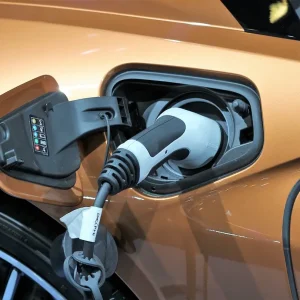The widespread adoption of EVs onto fleets will make tyre management the key area of focus for SMR budgets, according to software firm Fleetcheck.
The company said that according to real-world cost data, while general maintenance costs for EVs were lower than those associated with petrol and diesel cars, tyre costs were proving to be higher.
It said this would make tyres – for which costs had already been rising in recent years – an SMR focal point for fleets, with EV adoption looking set to increase substantially in the near future.
Fleetcheck managing director Peter Golding said: “Tyres have gradually become an ever more significant element of the SMR bill over the last decade or longer as standard fitments have become larger and lower profile.
“However, the arrival of EVs on fleets is going to bring about a step change that will make the situation even more acute.
“Looking at our user base, we are starting to see that while standard workshop servicing and maintenance costs for EVs are lower than for petrol and diesel vehicles thanks to the elimination of a variety of wear parts, tyre costs are increasing.”
Golding said that there were a number of reasons for EVs to be associated with higher tyre costs, including their increased weight compared with petrol and diesel cars, and the high torque levels seen from many electric powertrains.
He said: “EVs are much heavier than ICE vehicles and this causes increased wear, especially when it comes to models with two-wheel drive rather than four, and the high level of torque that some offer electric cars offer is also having a definite effect.
“While it is still early days in terms of building up a picture of the overall impact, it seems likely that the tyre element will move from being just over a third of the total cost over a fleet lifetime to nearer a half. It’s going to becoming the focal point of SMR management.”
Golding said that this shift would mean more consideration of fleet approaches to the management of tyre costs over time.
He said: “Tyre costs can, like every other element of the SMR bill, be successfully managed. Certainly, we expect greater emphasis to be placed on identifying the best suppliers who are able to offer tyres at the lowest prices, although most replacements will almost certainly be like-for-like in terms of manufacturer fitment, so potential for savings here may be limited.
“However, there is also likely to be increased interest in tyre maintenance, so we expect that there will be a more emphasis on ensuring tyre pressures are regularly checked and that other factors influencing wear such as wheel alignment are considered.”
Golding added that driving styles would also have a significant role to play in reducing tyre costs.
He said: “It has long been recognised that a more measured approach to cornering and braking can contribute to increased tyre life, which again takes us back to the subject of torque.
“We expect fleet managers to take a greater interest in how employees are using their EVs on the road as a result, with measures introduced that are designed to ensure that drivers are mindful of their tyre use – something that can be tracked using our software.”





